In the tribal heartlands of Central India, the mahua tree is more than just a tree; it’s a lifeline. At dawn, families gather its sweet flowers, weaving them into their food, medicine, and traditions. Here is a fascinating story by Balkishan Kaumarya and Sharat Chandra Prasad. However, as younger generations look for new avenues, the future of this forest-based life is uncertain, they say, adding that there is need for better support, such as fair prices for forest goods, water storage for farming, and local jobs that don’t harm the environment – only then can people live with dignity, without leaving behind their land and traditions
In the southern part of Chhattisgarh lies Bastar, a land of lush valleys, fast rivers, and dense forests. Indrawati, a tributary of the Godavari River, flows through the region, nourishing both the forest and its people. Home to tribal communities like the Gond and Muria (Muriya), Bastar has long lived in rhythm with nature. Most families here depend on the monsoon for farming. Bastar gets plenty of rain – about 1,200 to 1,600 mm each year, mostly during the southwest monsoon between June and September – and is dotted with rivers, streams, and forest springs.
Historically, this made Bastar relatively water-abundant compared to other dry and arid regions of Central India. That apart, the mahua tree’s extensive root system is known to support ground water recharge and prevent soil erosion. It’s rich in water. But the hilly terrain leads to rapid drainage, and with fewer check dams or ponds; water is barely conserved. Many communities continue to depend on rain-fed agriculture, making their livelihoods vulnerable to the increasingly unpredictable monsoon patterns driven by climate variability. Without tractors, families use simple tools to grow paddy, urad, and arhar on small, hand-shaped plots. The forest fills the gap with its produce.
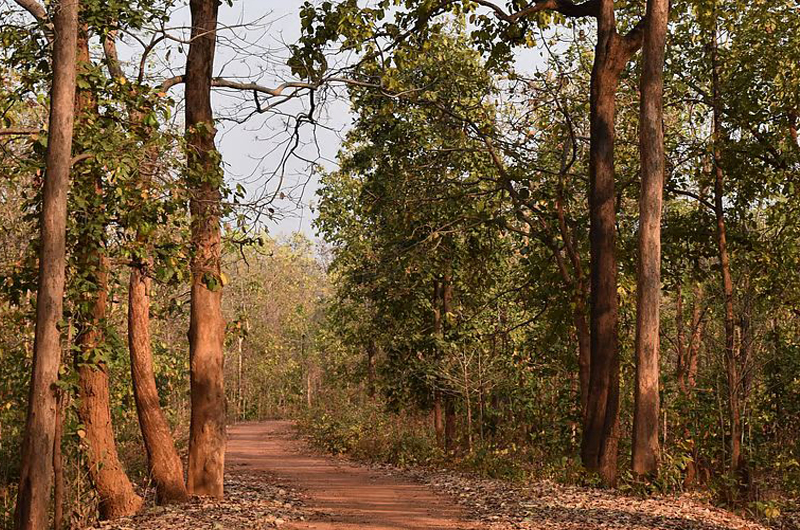
Villagers collect mahua flowers, tendu leaves, tamarind, tubers, and medicinal herbs—in a daily activity known as the vanopaj. Before sunrise, the tribal womenfolk head into the forest to collect the mahua flowers during the season. Their journey is not just work—it’s part of a deep tradition. As they walk under the canopy, it’s clear: the forest provides, and the people protect.
Mahua, Murias, and the Gonds
The Gond and the Muriya Tribes inhabit the region. The Gond people are guardians of the forest, practising sustainable harvesting methods that have been passed down through generations. They know which trees to harvest, when to harvest, and how much to take, ensuring that the forest can regenerate and continue to provide for future generations. This balance between use and conservation is critical to their survival. For them, every tree and trail carries the imprint of those who came before.
Two Muria women, Ghasneen Komre and Neelu Korram, venture to the forest to collect mahua flowers before sunrise with bottles of peez, a simple rice drink to sustain energy for over 5-6 hours. For families like theirs, forest products are not supplemental income—they are the foundation of their economy. From the mahua flowers to the tendu leaves, everything they need to survive and sustain their families is derived from the forest. Without it, their way of life would collapse.
For Neelu, collecting mahua is more than just a daily task; it is the cornerstone of her family’s existence. “The forest is our everything,” Neelu says. “Without it, we would have nothing. We rely on what the forest gives us—our food, our shelter, our life.” The flowers are dried, turned into sweet treats, or used to brew mahua liquor. The income from selling dried mahua or tending to bamboo and tendu is vital to the family’s finances. These forest products provide the means to pay for necessities like food, school fees, and other essential services.
Days ahead of the blooming season, women in the village head into the forest to get the ground ready. Dry leaves and grass are cleared from under the mahua trees so that when the flowers drop, they stay clean and can be picked easily. Neelu Korram does this every year with her family. Together, they visit the forest to find their trees and tidy up the space around them. “We clean the ground so the flowers don’t get mixed with mud and leaves,” she says.
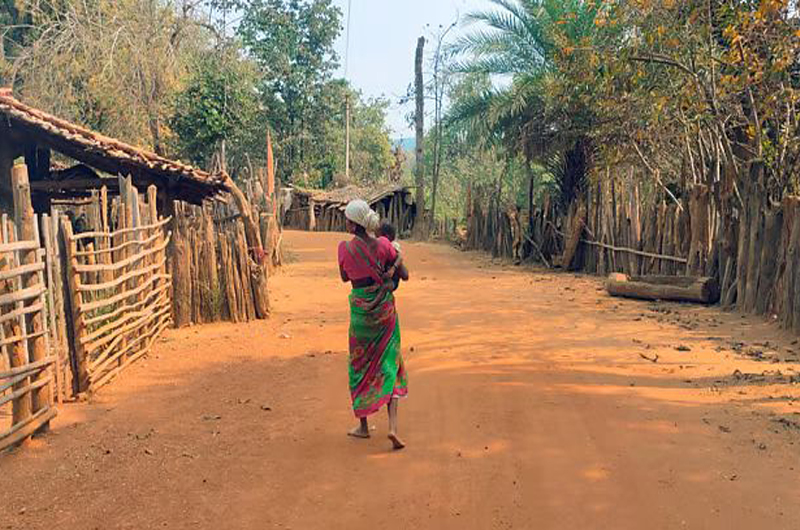
But their effort doesn’t stop there. These women also help protect the forest itself. In the dry months, Bastar’s forests are at risk of catching fire from fallen leaves. “Earlier, people used to burn the dry leaves,” says Neelu, adding, “Now, we gather them in one place instead. It helps prevent fire.” She remembers many times when she had to run and put out small fires using sand. “In our self-help group meetings, we’ve learnt not to burn the leaf waste. It keeps the forest safe—and helps us too,” she says, a quiet pride in her voice. Their work may go unnoticed, but it’s rooted in care—for the trees, the land, and each other. What seems like a simple routine is, in truth, an age-old practice that keeps both culture and forest alive.
A cultural and environmental bond
As long as the forest stands, so too will the Gond people. And they will continue to protect it, as they have for generations, knowing that their future depends on the health of the trees, the land, and the spirits of the forest. Even though Bastar falls under the Fifth Schedule and laws like the Panchayats (Extension to Scheduled Areas) Act (PESA), 1996, and the Forest Rights Act (FRA), 2006—officially known as the Scheduled Tribes and Other Traditional Forest Dwellers (Recognition of Forest Rights) Act— are meant to protect tribal rights, the lack of awareness and education leaves many people vulnerable. “If the government helps us with support and awareness, we can live better and protect our jungle too,” Neelu believes.
By continuing to care for the trees, women like Neelu and Ghasneen are not only gathering flowers; they are weaving together the threads of identity, culture, and sustainability—keeping the traditions of the past alive for future generations. People like Neelu still believe that the forest is their future. She says, “If the government helps us with support and awareness, we can live better and protect our jungle too.” In a world rushing towards quick profits, it stands as a quiet symbol of sustainability and community wisdom. Protecting the mahua tree isn’t just about saving a species—it’s about preserving a way of life. It’s about giving value to forest traditions that have lasted centuries and are still relevant today.
Once the flowers are collected, the real work begins. The women return home with their harvest, their baskets heavy with golden blooms. The flowers are spread out on cloths under the sun to dry. The process can take up to ten days, and during this time, the women must turn the flowers regularly to ensure they dry evenly. Neelu carefully arranges the flowers in the open courtyard, watching over them like a sacred guardian. “If we don’t dry the flowers properly, they will spoil,” she explains. The drying process is slow and methodical—each day, the flowers shrink, their sweetness intensifying as they lose their moisture.
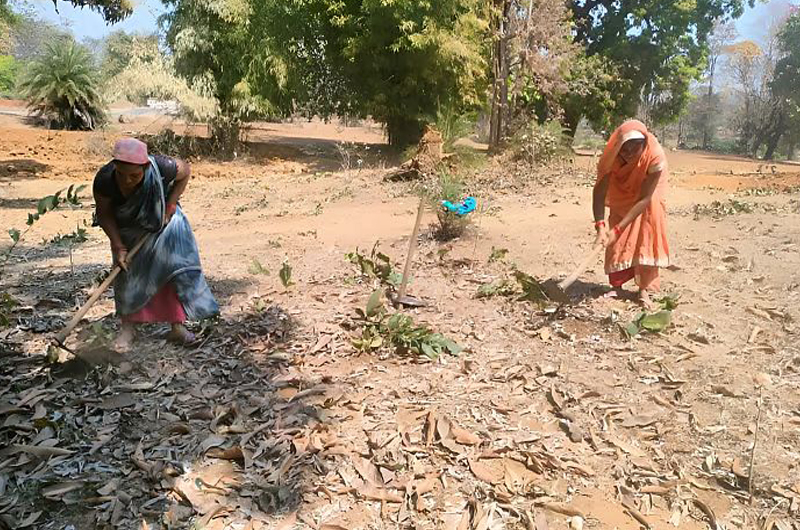
The drying process isn’t just about preservation; it is about transforming the flowers into something more. Dried mahua can be used in food, medicine, and liquor. It also becomes a key ingredient in the local economy—purchased by traders, used by families, and sold in local markets. The women’s patience during these ten days ensures that the flowers are preserved in their purest form, ready to be shared with the community.
When the market is uncertain, so is the income
Depending on the market, the price of mahua flowers varies between Rs 50 and Rs 70 per kg. That means they can earn up to Rs 20,000–Rs 30,000 in a good season. But there’s no fixed price. “There’s an APMC minimum support price (MSP),” Neelu says, “but if we sell to the government mandi (market), the payment comes after one month. We can’t wait that long—we have day-to-day needs in the house.” The lack of accessible, fair markets forces many to sell to middlemen at lower prices, just to get quick cash.
Ghasneen, a member of a self-help group, believes there’s untapped potential. “We can make so many products from mahua—roti, laddu, gulab jamun—but there’s no proper market. We do so much labour, but we’re still not happy with the returns.” Their mahua collection routine is not just hard—it’s risky. “We stay in the jungle 6–7 hours on just a peez drink. There’s always fear of wild dogs and bears,” Neelu adds.
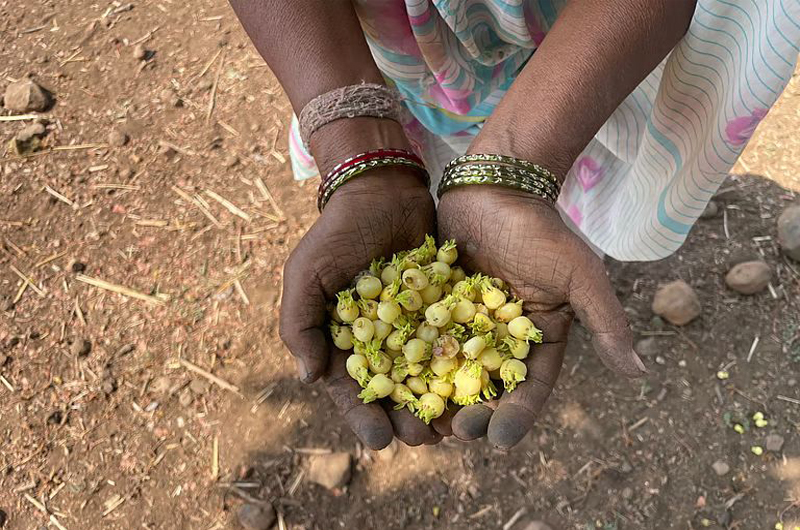
Balancing livelihood and change
Even with the rivers, forests, and rain, life in Bastar isn’t easy. Farming doesn’t bring enough, and the forest—though generous—demands care and patience. “We depend on the forest, but we’re always walking a tightrope,” says Neelu. “There are wild animals in the jungle, but we still go. We can’t sit at home.”
Ghasneen adds, “We do so much hard work collecting, drying, selling… but in the end, we earn just enough to survive.” There’s a deep desire for change—not to abandon the forest, but to be supported in living with it. “If we get fair prices and help to make products ourselves, we won’t have to run after middlemen,” Ghasneen says. “We can grow, and so can our forest.”
As weather patterns change and younger generations look for new paths, the future of this forest-based life is uncertain. There’s a need for better support—like fair prices for forest goods, water storage for farming, and local jobs that don’t harm the environment. Only then can people live with dignity, without leaving behind their land and traditions.
(Courtesy: India Water Portal/ indiawaterportal.org)


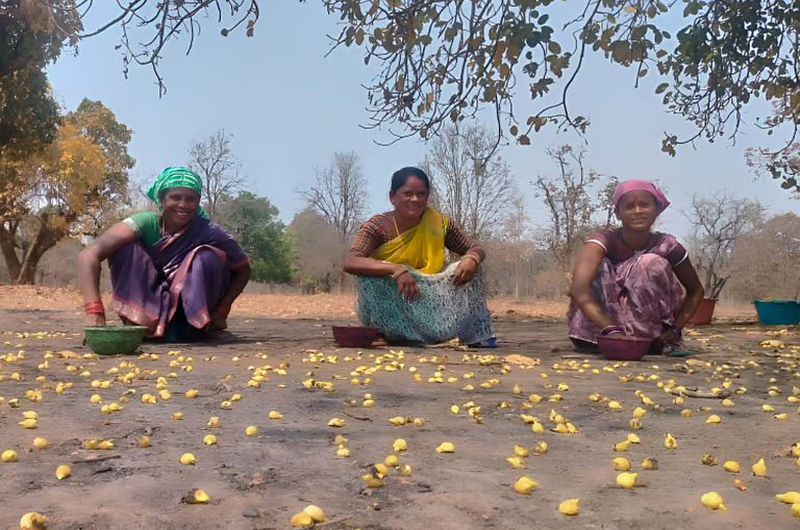
 from Webdoux
from Webdoux